Economy
Albania, a formerly closed, centrally-planned state, is a developing country with a modern open-market economy. Albania managed to weather the first waves of the global financial crisis but, the negative effects of the crisis caused a significant economic slowdown. Since 2014, Albania’s economy has steadily improved and economic growth is projected to increase to 3.8% in 2017. However, close trade, remittance, and banking sector ties with Greece and Italy make Albania vulnerable to spillover effects of possible debt crises and weak growth in the euro zone.
Remittances, a significant catalyst for economic growth, declined from 12-15% of GDP before the 2008 financial crisis to 5.8% of GDP in 2015, mostly from Albanians residing in Greece and Italy. The agricultural sector, which accounts for almost half of employment but only about one-fifth of GDP, is limited primarily to small family operations and subsistence farming, because of a lack of modern equipment, unclear property rights, and the prevalence of small, inefficient plots of land. Complex tax codes and licensing requirements, a weak judicial system, endemic corruption, poor enforcement of contracts and property issues, and antiquated infrastructure contribute to Albania's poor business environment making attracting foreign investment difficult. Since 2015, Albania has launched an ambitious program to increase tax compliance and bring more businesses into the formal economy. In July 2016, Albania passed constitutional amendments reforming the judicial system in order to strengthen the rule of law and to reduce deeply entrenched corruption.
GDP (purchasing power parity): $34.16 billion (2016 est.)
GDP - real growth rate: 3.4% (2017 est.)
GDP - per capita (PPP): $11,800 (2016 est.)
Geo Position
Albania has a total area of 28,750 square kilometers. Its coastline is 362 kilometres long and extends along the Adriatic and Ionian Seas. The lowlands of the west face the Adriatic Sea. The 70% of the country that is mountainous is rugged and often inaccessible from the outside. The highest mountain is Korab situated in the district of Dibra, reaching up to 2,753 metres (9,032 ft). The country has a continental climate at its high altitude regions with cold winters and hot summers. Besides the capital city of Tirana, which has 800,000 inhabitants, the principal cities are Durrës, Elbasan, Shkodër, Gjirokastër, Vlorë, Korçë and Kukës. In Albanian grammar, a word can have indefinite and definite forms, and this also applies to city names: both Tiranë and Tirana, Shkodër and Shkodra are used.
The three largest and deepest tectonic lakes of the Balkan Peninsula are located in Albania. Lake Shkodër in the country's northwest has a surface of 368 km², out of which 149 km² belong to Albania. The Albanian shoreline of the lake is 57 km. Ohrid Lake is situated in the country's southeast and is shared between Albania and Republic of Macedonia. It has a maximal depth of 289 meters and a variety of unique flora and fauna can be found there, including “living fossils” and many endemic species. Because of its natural and historical value, Ohrid Lake is under the protection of UNESCO.
Over a third of the territory of Albania – about 10,000 square kilometres (2.5 million acres) – is forested and the country was very rich in flora. About 3.000 different species of plants grow in Albania, many of which are used for medicinal purposes. Phytogeographically, Albania belongs to the Boreal Kingdom and is shared between the Adriatic and East Mediterranean provinces of the Mediterranean Region and the Illyrian province of the Circumboreal Region. According to the WWF and Digital Map of European Ecological Regions by the European Environment Agency, the territory of Albania can be subdivided into three ecoregions: the Illyrian deciduous forests, Pindus Mountains mixed forests and Dinaric Mountains mixed forests. The forests are home to a wide range of mammals, including wolves, bears, wild boars, and chamois. Lynx, wildcats, pine martens and polecats are rare, but survive in some parts of the country.
About Albania
Area: 28.748 sq. km.
Population: 3.500.000
Local time: GTM +1 ( GTM+2 between the end of April and the end of October )
Capital: Tirana ( population 553.435 )
Language: Albanian ( part of Indo – Europian family)
Political System: Parlamentary Republic
Religion: Muslim, Orthodox and Catholic
Airport: Rinas ( Mother Teresa)
Railways: 447 km
Geography and Borders
Albania situated on a border with Montenegro and Kosovo to the North and North East, FYR Macedonia to the East and Greece to the South. It is washed by the Adriatic and Ionian seas to the West and separated from Italy through the straight of Otranto, of 82 km.
Albania surprises the tourists with the diversity of its landscapes, which change quickly and dramatically.
Landscapes range from typical Mediterranean in West and South West , to mixed landscapes in central area, to steep mountains in the inner part of country. On the beautiful coast virgin and fine sandy and pebble beaches are to be found. The country is jeweled with plenty of beautiful inland lakes, natural lagoons, reserves, hunting grounds and SPA.
Climate
Albania has Mediterranean climate bescause of its muontainous character and broken relief , the climate varies throughuot the country. Albania is characterized by hot and dry summers, with bright sunny days and generally mild winters with abundant rainfalls. In Albanian Alps,in the northern part, the winters are cold and summers chilly. Normally the period from June to September is characterized by hot and sunny whether, while from October to May the weather is cool and wet. Notwithstanding that Albanian beauty can be appreciated around the year the best months to visit Albania are April, May and June as well as the period from mid-October. Required clothing : light clothing in summer and warm clothing in winter.
Currency
The banknotes are in denominations of Lek 5000, 1000, 500, 200, and 100. Coins are in denominations 50, 20, 10 and 5 Lek.
Currency Exchange : Many exchange bureaux will change foreign currency, but Banks offer the best exchange rates about 133 Leke per 1 Euro and 120 Leke per 1 US Dollar with slight variations
Local Time
GTM 1 ( GTM +2 between the end of April and the end of October)
Postal and Communication Services
Country Code: ++355
Zip Code: Tirana 1000.
Central post offices operate in Tirana, Durres and other cities performing a very fast service between Albania and other countries. The majority of accommodations have telecommunication services.
Facts and Figures
Albania - Target for Investments.
Most viewed properties
-
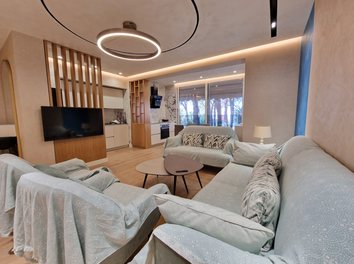 Show me moreApartment 102 m2 Qerret beach, near Prestige Resort
Show me moreApartment 102 m2 Qerret beach, near Prestige Resort
TWO BEDROOM APARTMENT FOR SALE IN QERRET BEACH 190,000 Euro -
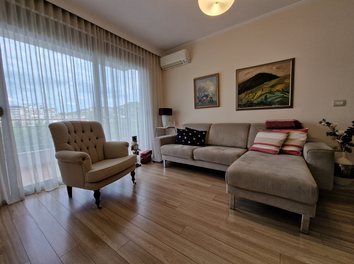 Show me moreApartment 64.29 m2 Hamdi Sina street
Show me moreApartment 64.29 m2 Hamdi Sina street
FOR SALE – 1-BEDROOM APARTMENT WITH FULL LAKE VIEW IN LIQENI I THATË 135,000 Euro -
 Show me moreApartment 109 m2 Muhamet Gjollesha street
Show me moreApartment 109 m2 Muhamet Gjollesha street
FOR SALE: 3+1 APARTMENT WITH MODERN DESIGN AND ARCHITECTURAL FURNISHING NEAR 21 DHJETORI 240,000 Euro -
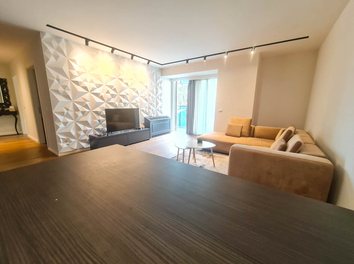 Show me moreApartment 127.72 m2 Ambasador 3 Residence, near the Air Albania stadium
Show me moreApartment 127.72 m2 Ambasador 3 Residence, near the Air Albania stadium
MODERN 2-BEDROOM APARTMENT FOR SALE IN AMBASADOR 3, NEXT TO AIR ALBANIA STADIUM 450,000 Euro -
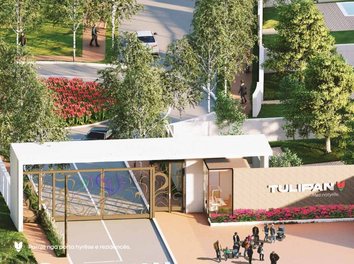 Show me moreApartment 144.08 m2 Tulipan Residence, Mjull Bathore
Show me moreApartment 144.08 m2 Tulipan Residence, Mjull Bathore
FOR SALE: 2+1 APARTMENT IN TULIPAN RESIDENCE 274,000 Euro -
 Show me moreApartment 76.25 m2 Bardhyl Road, near Raiffeisen Bank 69,900 Euro
Show me moreApartment 76.25 m2 Bardhyl Road, near Raiffeisen Bank 69,900 Euro
Featured properties for sale
-
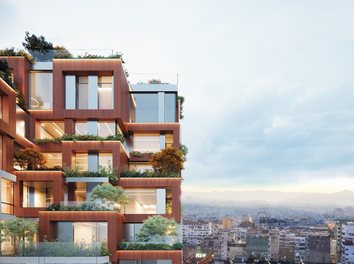 Show me moreApartment 158 m2 Nikolla Tupe street
Show me moreApartment 158 m2 Nikolla Tupe street
FOR SALE: EXCLUSIVE 2+1 APARTMENT IN UNICO, ISH-BLLOK, TIRANA 679,000 Euro -
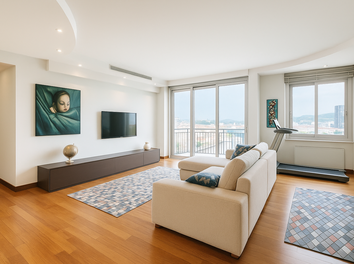 Show me moreApartment 156.7 m2 Bajram Curri Boulevard, near the Pyramid of Tirana
Show me moreApartment 156.7 m2 Bajram Curri Boulevard, near the Pyramid of Tirana
FOR SALE 2-BEDROOM APARTMENT WITH VERANDA NEAR ETC AND THE PYRAMID 780,000 Euro -
Show me moreVilla 1000 m2 Residential villas block close to Dajti Mountain Monthly 8,000 Euro
-
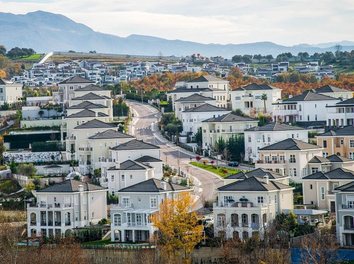 Show me moreVilla 705 m2 Villa in the residential complex Rolling Hills 1
Show me moreVilla 705 m2 Villa in the residential complex Rolling Hills 1
VILLA FOR RENT IN THE ROLLING HILLS RESIDENTIAL COMPLEX Monthly 7,000 Euro -
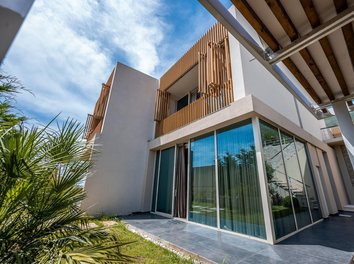 Show me moreVilla 291.8 m2 Green Coast, Palase
Show me moreVilla 291.8 m2 Green Coast, Palase
LUXURY SEMI-DETACHED VILLA FOR SALE – GREEN COAST PALASË 3,000,000 Euro -
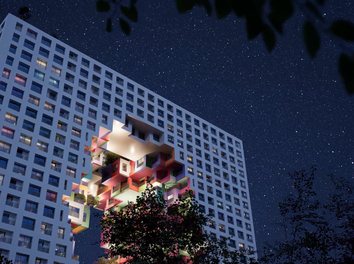 Show me moreOffice 146.4 m2 New Boulevard
Show me moreOffice 146.4 m2 New Boulevard
OFFICE FOR SALE AT TIRANA BOULEVARD TOWER 470,000 Euro

Do you have a property
for sell or rent?
Send your contacts to Devinf
and
our professional agents
will reach you right away.
-
 Apartments
Apartments
-
 Villas
Villas
-
 Offices
Offices
Tirana map with fiscal prices 2017
Our vast knowledge of the actual market as well as that of the development perspective in different areas has given us the knowledge to complete the first and only Interactive Map of Tirana with suggested prices for each neighbourhood.














